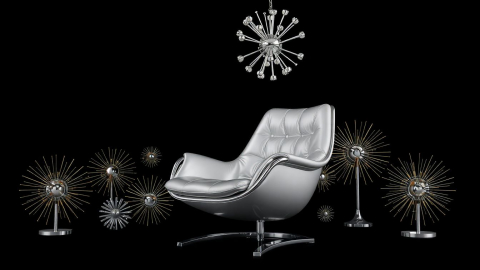Embracing the Warmth of Mediterranean Interior Design: A Comprehensive Guide
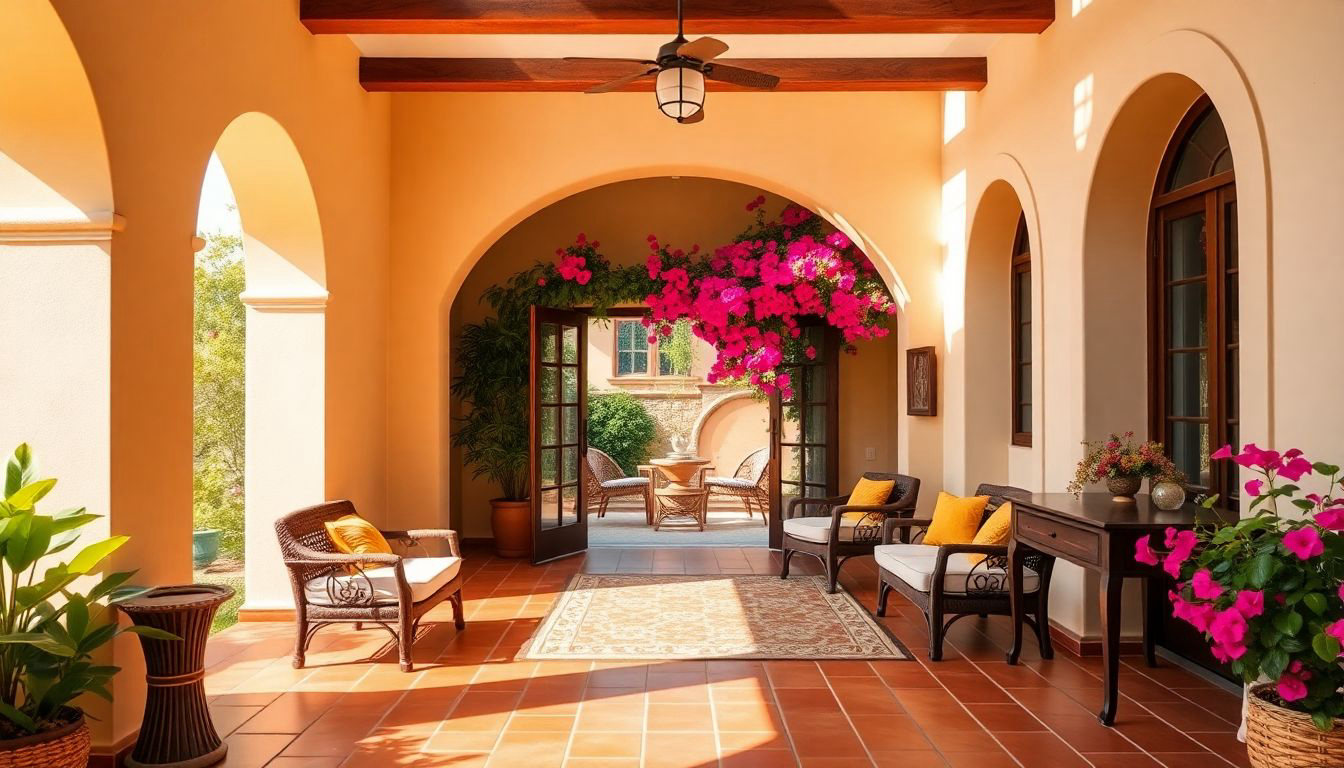
Imagine stepping into a sun-drenched villa, where the gentle sea breeze carries the scent of blooming bougainvillea through arched doorways. The warm terracotta floors beneath your feet lead you to a bright, airy living space adorned with natural textures and vibrant accents. This is the essence of Mediterranean interior design – a style that seamlessly blends indoor and outdoor living, creating spaces that are both elegantly timeless and effortlessly inviting.
In this comprehensive guide, we'll explore the key elements of Mediterranean interior design, from its rich historical roots to practical tips for incorporating this warm and welcoming style into your own home. Whether you're dreaming of a Tuscan retreat or a Greek island getaway, let's embark on a journey to bring the Mediterranean's laid-back luxury into your living spaces.
The Essence of Mediterranean Style
Mediterranean interior design is more than just a visual aesthetic; it's a lifestyle that celebrates the region's natural beauty, rich history, and relaxed approach to living. As interior designer Megan Hersch explains, "Calling to a faraway place of open spaces with a fluid indoor/outdoor lifestyle, Mediterranean decor has a gorgeous way of bringing what many associate with a vacation into your everyday life."
This design style draws inspiration from countries bordering the Mediterranean Sea, including Spain, Greece, Italy, and Morocco. Each region contributes its unique flavors to the overall aesthetic, resulting in a versatile and adaptable style that can suit various tastes and environments.
Key Characteristics
To truly understand Mediterranean interior design, let's explore its defining features:
- Natural Materials: The use of organic, locally-sourced materials is paramount. Think terracotta tiles, limestone, marble, and wood with rich, warm tones.
2. Light and Airy Spaces: Mediterranean homes emphasize natural light and ventilation, often featuring large windows, French doors, and open floor plans.
- Indoor-Outdoor Living: The boundaries between interior and exterior spaces are often blurred, with seamless transitions to patios, courtyards, and gardens.
4. Warm Color Palette: Inspired by the Mediterranean landscape, colors range from warm earthy tones to vibrant jewel hues and cool sea-inspired shades.
- Textured Surfaces: From rough-hewn wooden beams to smooth plastered walls, texture plays a crucial role in adding depth and interest to spaces.
6. Ornate Details: Wrought iron accents, intricate tile work, and hand-painted ceramics add character and visual interest.
Bringing Mediterranean Style Home
Now that we've outlined the key elements of Mediterranean design, let's explore how you can incorporate this timeless style into your own home, regardless of your location or budget.
1. Embrace Natural Light
The Mediterranean lifestyle revolves around sunlight, so maximizing natural light in your space is crucial. Interior designer Mark Williams advises, "When you think of coastal villages in Spain, France, Italy, and Northern Africa, you think of white stucco, the azure of the sea, terra cotta, and richly hued glazed ceramics. Mediterranean decor should never be heavy or fussy, and it should always feel like a breath of fresh air."
To achieve this airy feel:
- Opt for sheer curtains or lightweight blinds that allow light to filter through
- Use mirrors strategically to reflect and amplify natural light
- Consider installing French doors or large windows to create a seamless indoor-outdoor flow
2. Choose a Mediterranean-Inspired Color Palette
The colors of the Mediterranean are both vibrant and earthy, reflecting the region's stunning natural landscapes. As Ben Hyman notes, "Mediterranean decor is usually simple and romantic. It's characterized by light and warm colors usually found in nature, such as terracotta, chestnut, cerulean, azure, and seafoam green."
To create a Mediterranean color scheme:
- Use warm, neutral tones like creamy whites and soft beiges as a base
- Incorporate earthy accents such as terracotta, ochre, and olive green
- Add pops of vibrant blue, reminiscent of the sea and sky
- Don't be afraid to use bold jewel tones like emerald green or deep purple as statement colors
3. Incorporate Natural and Rustic Textures
Texture is key in Mediterranean design, adding depth and interest to spaces. From rough-hewn wooden beams to smooth plastered walls, the interplay of different textures creates a rich, layered look.
To add texture to your space:
- Use natural stone or terracotta tiles for flooring
- Incorporate wooden elements with visible grain, such as exposed beams or rustic furniture pieces
- Add textured textiles like woven rugs, linen curtains, and embroidered pillows
- Consider a textured wall treatment, such as Venetian plaster or a lime wash
4. Invest in Statement Tiles
Perhaps one of the most iconic elements of Mediterranean design is the use of colorful, patterned tiles. As Tina Delia explains, "Patterned tile is typical of Mediterranean style. You will find hand-painted terra cotta or cement tiles in almost every Mediterranean home. Not only for the aesthetic but because these tiles stay cool to the touch for this warm climate."
To incorporate statement tiles:
- Use patterned tiles as a kitchen backsplash or bathroom feature wall
- Create a striking entryway with a tiled floor mosaic
- Add interest to outdoor spaces with tiled staircases or patio accents
5. Blend Indoor and Outdoor Living
One of the hallmarks of Mediterranean living is the seamless integration of indoor and outdoor spaces. This connection to nature not only expands your living area but also promotes a relaxed, vacation-like atmosphere.
To create an indoor-outdoor flow:
- Install large windows or French doors that open onto a patio or garden
- Use similar flooring materials indoors and outdoors for a cohesive look
- Bring outdoor elements inside, such as potted olive trees or large terracotta planters
- Create an outdoor living room with comfortable seating, textiles, and ambient lighting
6. Incorporate Wrought Iron and Ceramic Accents
Ornate details are a key feature of Mediterranean design, adding character and visual interest to spaces. Wrought iron and hand-painted ceramics are particularly prevalent in this style.
To add these decorative elements:
- Install wrought iron light fixtures, such as chandeliers or wall sconces
- Use wrought iron for stair railings, curtain rods, or bed frames
- Display collections of hand-painted ceramic plates or bowls
- Incorporate ceramic tile accents in unexpected places, like stair risers or fireplace surrounds
The Modern Mediterranean Approach
While traditional Mediterranean design is timeless, many homeowners are now opting for a more contemporary take on the style. This modern Mediterranean approach combines classic elements with clean lines and minimalist sensibilities.
To achieve a modern Mediterranean look:
- Stick to a more neutral color palette with subtle pops of color
- Choose furniture with clean lines and simple silhouettes
- Use traditional materials like stone and wood in more contemporary forms
- Incorporate modern lighting fixtures alongside classic Mediterranean elements
- Opt for large-format tiles in neutral tones rather than intricate patterns
As interior designer Christine Kimberlee demonstrates in her work, "crisp details like Shaker-style cabinets and sleek stools pair with a colorful tile backsplash and pendant lights with an arabesque design for a modern twist on Mediterranean style."
Bringing It All Together
Creating a Mediterranean-inspired home is about more than just following a set of design rules. It's about capturing the essence of the Mediterranean lifestyle – one that values relaxation, connection with nature, and the simple pleasures of life.
As you embark on your Mediterranean design journey, remember the advice of Mark Williams and Niki Papadopoulos: "That feeling you have when you open a window, let the sun fall on your face, and feel the breeze on your skin is where you should begin. Close your eyes, find that feeling, and then start imagining the space you are standing in before opening your eyes. When the design of the space evokes that feeling, when the space in your head causes you to exhale and relax, you have just started down the road of creating a Mediterranean style room."
Whether you're drawn to the rustic charm of a Tuscan farmhouse, the breezy elegance of a Greek island villa, or the vibrant energy of a Moroccan riad, Mediterranean interior design offers a wealth of inspiration for creating spaces that are both beautiful and livable. By incorporating natural materials, embracing light and color, and blurring the lines between indoor and outdoor living, you can bring the warmth and romance of the Mediterranean into your own home, no matter where you live.
So open those windows, let in the light, and start your journey towards creating your own personal Mediterranean retreat. With its timeless appeal and adaptable nature, Mediterranean interior design is more than just a trend – it's a celebration of life, beauty, and the art of living well.
References and Further Reading
- Mediterranean Interior Design: Everything You Need to Know About This Colorful Coastal Style
- What Is Modern Mediterranean Style? (+ Ideas you can use)
- Mediterranean Decor Style Guide: Everything You Need to Know
- 7 Ways to Add Mediterranean Elegance to Your Home
- Your Guide to Mediterranean Style
- Welcome the Mediterranean Style in Your Home with These 5 Simple Ideas
More Articles
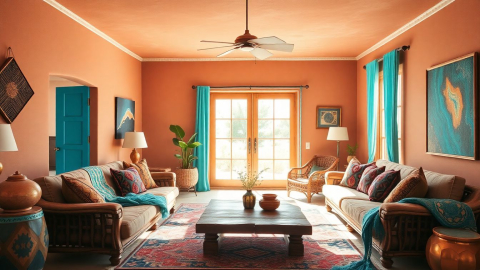
Southwestern Interior Design: A Timeless Blend of Desert Chic and Cultural Heritage
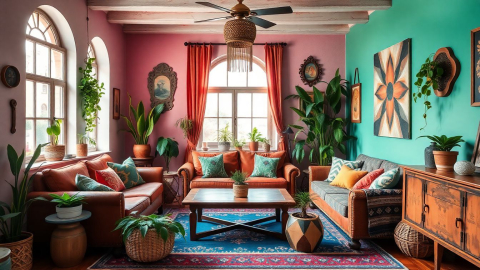
Embracing the Boho Spirit: A Comprehensive Guide to Bohemian Interior Design
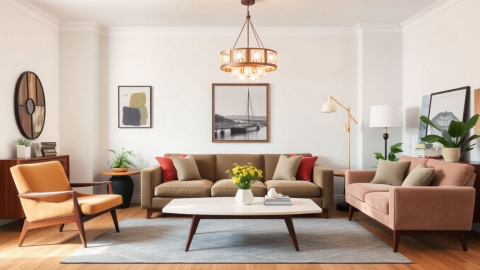
Vintage Style Interior Design: Timeless Charm Meets Modern Flair

The Haunting Allure of Gothic Architecture: A Journey Through Time and Aesthetics
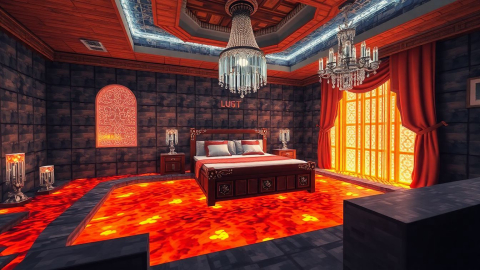
The Minecraft Interior Design Extravaganza: Where Pixels Meet Pretension
